Stamping in embroidery is a creative technique that simplifies the initial stages of the embroidery process. It involves transferring a pre-designed pattern onto the fabric using ink, paint, or a similar medium, serving as a visual guide for embroiderers.
This method is especially popular among beginners as it eliminates the need for intricate drawing or tracing.
Stamped patterns offer a structured starting point, saving time and reducing errors while allowing room for creative expression.
From traditional rubber stamps to modern heat-transfer pens, various stamping methods provide embroiderers with a convenient and guided approach to their projects.
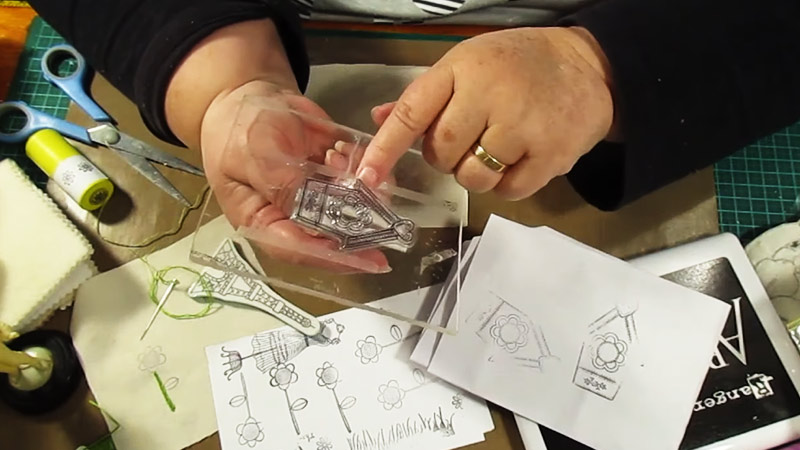
What Is Stamping in Embroidery?
Stamping in embroidery is a technique where a pre-designed pattern is transferred onto the fabric using ink, paint, or a similar medium.
This process eliminates manual drawing or tracing, providing a clear visual guide for embroiderers.
Stamped patterns often include outlines, shapes, and sometimes color indications. Suitable for various skill levels, especially beginners, stamping streamlines the initial steps of embroidery projects.
Once the fabric is stamped, it is typically placed in an embroidery hoop, and the embroiderer follows the stamped guide, applying needle and thread to create the desired embroidered design.
Step-By-Step Explanation: How Does Stamping Work in Embroidery?
Stamping in embroidery is a technique used to transfer a design or pattern onto fabric before stitching. The process involves using ink, paint, or another transfer medium to create a visible guide for embroiderers.
Here’s a step-by-step explanation of how stamping works in embroidery:
Design Creation
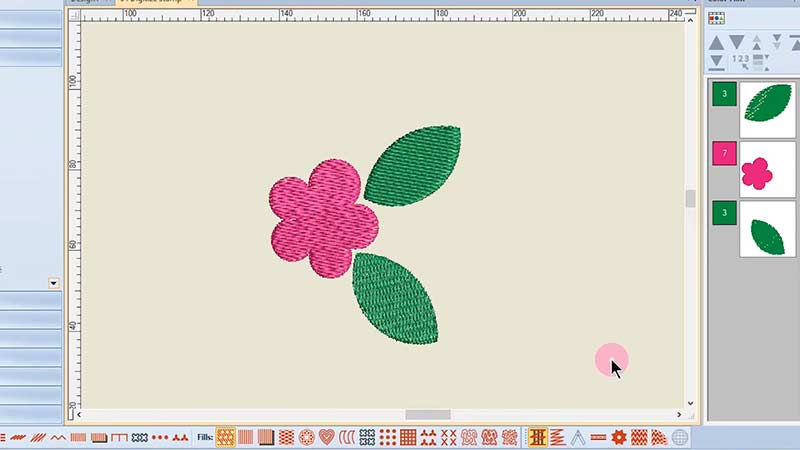
Begin by creating a design or pattern. This design will serve as the template for your embroidery project. It can be a simple or intricate image, often including details like outlines, shapes, and potentially color indications.
Transfer Medium Selection
Choose a transfer medium suitable for the fabric and your design. Common options include fabric ink pads, fabric paint, or specialty transfer products specifically designed for embroidery.
Fabric Preparation
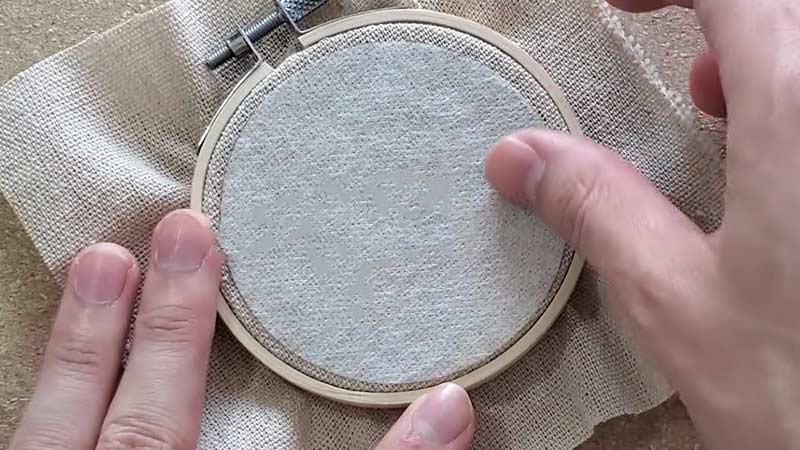
Prepare the fabric by washing and ironing it to remove any wrinkles, dirt, or sizing agents. A clean and smooth fabric surface ensures a better transfer of the design.
Inking or Painting the Stamp
If using a stamp, apply fabric ink to the stamp surface. Ensure that the ink is evenly distributed on the stamp to achieve consistent coverage during the transfer.
Stamping the Fabric
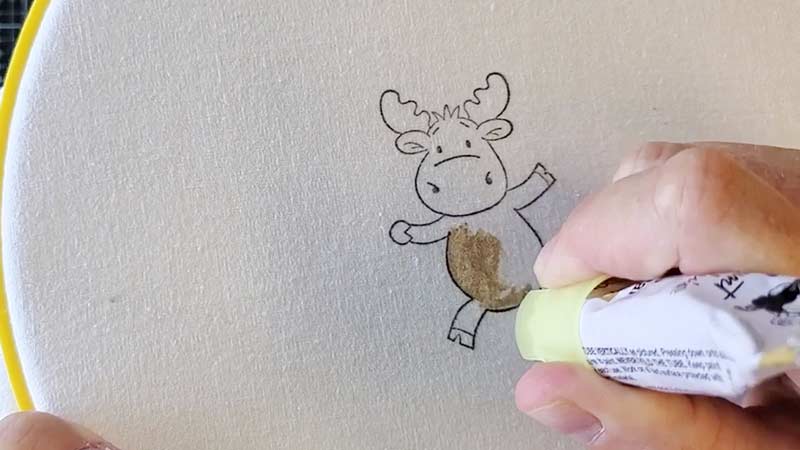
Press the inked stamp firmly onto the fabric in the desired location. Make sure to apply even pressure to transfer the design accurately. Lift the stamp carefully to avoid smudging.
Heat Transfer (Optional)
Some stamped designs may require heat setting for better adhesion. This is often done by applying heat with an iron, following the instructions provided by the specific transfer medium.
Placement in Embroidery Hoop
Place the stamped fabric within an embroidery hoop to keep it taut and stable. The hoop helps maintain the fabric’s tension, making it easier for the embroiderer to work on the stamped design.
Embroidery Process
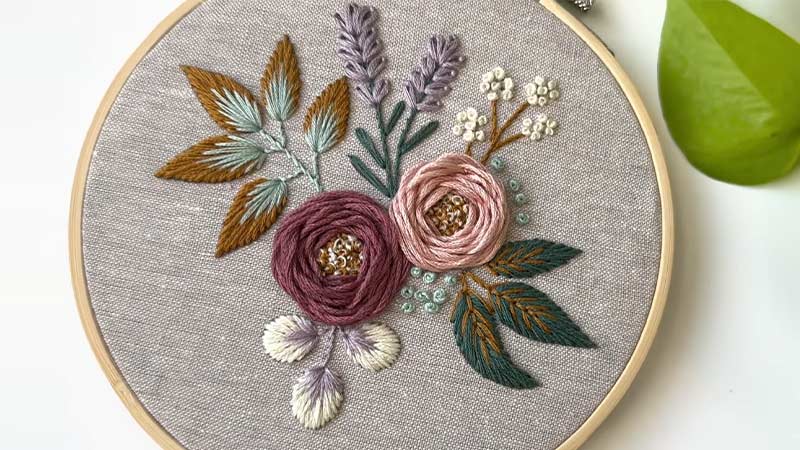
The stamped design now serves as a visual guide for the embroiderer. Follow the lines and shapes of the stamped pattern, applying needle and thread to fill in the design using various embroidery stitches.
Completing the Embroidery
Once the embroidery is finished, remove the fabric from the hoop. Trim any excess threads and inspect the piece for any final adjustments.
Final Touches (Optional)
Depending on the transfer medium used, the finished embroidered piece may undergo additional steps, such as washing or ironing, to remove any residual ink or paint.
Benefits of Using Stamping in Embroidery Projects
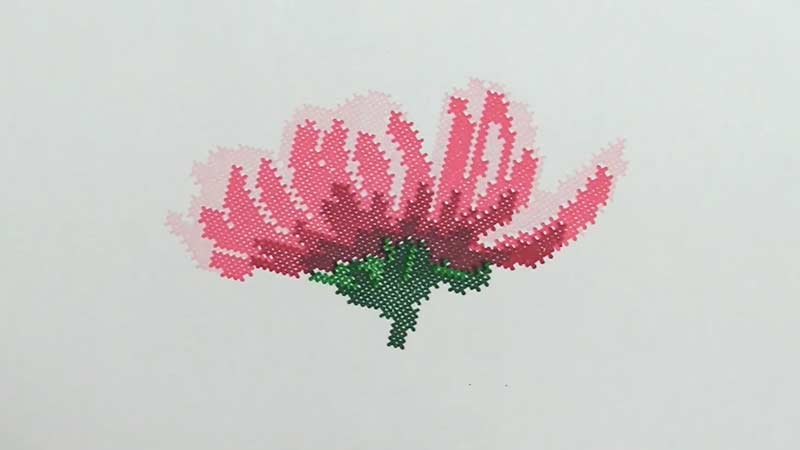
Using stamping in embroidery projects offers several benefits, making it a popular technique for embroiderers of all skill levels.
Here are some key advantages:
Time Efficiency
Stamping saves time in the initial stages of an embroidery project. There’s no need to spend extra time drawing or tracing the design onto the fabric, allowing embroiderers to jump straight into stitching.
Guided Stitching
Stamped patterns provide clear guidelines for where stitches should be placed. This is especially beneficial for beginners who may find it challenging to maintain accurate placement without a visual guide.
Reduced Errors
The pre-printed design helps reduce the chances of errors in the placement of stitches. Embroiderers can follow the stamped lines, minimizing the risk of mistakes and creating a more polished final result.
Accessibility for Beginners
Stamping makes embroidery more accessible for beginners who may be less confident in drawing or tracing their designs. It offers a structured starting point, allowing beginners to focus on learning and practicing stitches.
Consistent Design Replication
Stamping ensures consistency in design replication, particularly for projects that require multiple identical or similar motifs. This is advantageous in creating cohesive and uniform embroidered pieces.
Creative Flexibility
While stamped patterns provide guidance, there is still room for creative flexibility. Embroiderers can choose thread colors, experiment with stitches, and add personal touches to enhance the design.
Versatility in Design Choices
Stamped patterns come in various designs and themes, catering to diverse preferences. This versatility allows embroiderers to choose projects that align with their interests, making embroidery a more enjoyable and personalized experience.
Convenience in Group Settings
Stamped patterns are convenient for group or educational settings where multiple individuals work on similar projects. The consistent starting point simplifies coordination and instruction.
Ease of Use with Kits
Stamped patterns are often included in embroidery kits with all the necessary materials. This convenience is especially helpful for those new to embroidery, as it eliminates the need to gather separate supplies.
Less Stressful for Large Projects
Stamping can be less stressful for larger or intricate designs than manually transferring a complex pattern onto fabric. It ensures that the design is accurately replicated across the entire project.
Structured Starting Point
Stamping provides a structured and organized starting point for an embroidery project, allowing embroiderers to focus on the artistic and stitching aspects rather than spending time on intricate design work.
Drawbacks of Using Stamping in Embroidery
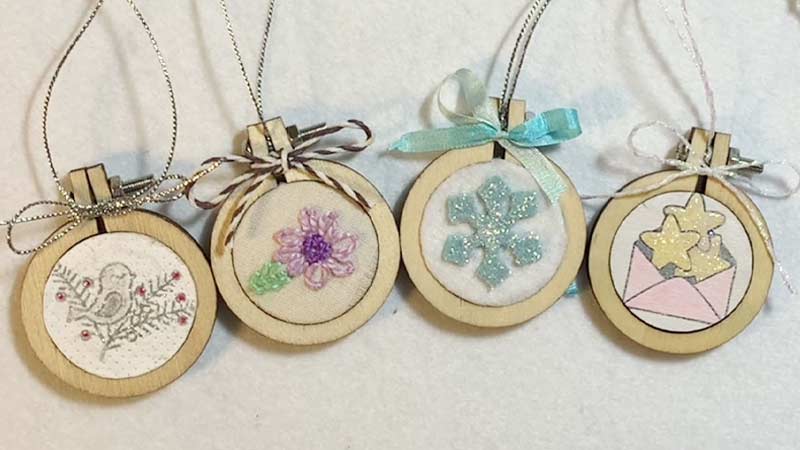
While stamping in embroidery offers numerous advantages, there are also some drawbacks to consider. It’s important to weigh these factors against the benefits when deciding whether to use stamping in your embroidery projects:
Limited Design Options
Stamped patterns may limit the range of design options compared to freehand or digitally transferred designs. Those seeking highly customized or intricate designs might find stamped patterns restrictive.
Less Personalization
While stamped patterns allow for some customization, they may lack the personal touch that comes with creating a unique design from scratch. Some embroiderers prefer the individuality that hand-drawn or digitally-created designs offer.
Potential for Inaccuracies
In some cases, stamped patterns may not transfer accurately onto the fabric, resulting in inaccuracies in the design. This can be especially problematic if the stamping method or materials are unsuitable for the chosen fabric.
Dependency on Stamp Quality
The stamped design’s quality depends on the stamp’s quality and the ink or paint used. Poorly made stamps or low-quality ink may lead to uneven or faint transfers, impacting the overall appearance of the embroidery.
Limited to Fabric Compatibility
Stamping works best on certain fabric types, such as cotton or linen. Fabrics with certain textures or finishes may not hold the stamped design effectively, limiting the range of materials for embroidery projects.
Challenge in Color Matching
Stamped patterns often indicate suggested colors for the embroidery, but achieving an exact match can be challenging. Embroiderers may need to adapt and experiment with thread colors to achieve the desired result.
Difficulty in Correction
Mistakes made during the stamping process can be challenging to correct. Unlike pencil or pen marks, stamped designs are often permanent, and errors may require additional creative solutions during the stitching phase.
Risk of Smudging
Depending on the stamping method and materials used, smudging the design is risky during the embroidery process. This is particularly true if the ink or paint has not fully set or dried.
Not Ideal for Complex Designs
Stamped patterns are well-suited for simpler designs but may not be the best choice for highly complex or intricate projects. Fine details may not transfer as accurately, and embroiderers may find it challenging to replicate intricate patterns.
Less Educational for Drawing Skills
For those interested in improving their drawing or design skills, relying on stamped patterns may hinder the development of these abilities. Freehand drawing or designing digitally allows for more hands-on learning.
Dependency on Commercial Patterns
Embroiderers using stamped patterns often depend on commercially available designs. This reliance on pre-made patterns may limit the originality and uniqueness of the finished projects.
FAQs
Are stamped patterns suitable for all skill levels?
Yes, stamped patterns cater to beginners and experienced embroiderers, offering a structured starting point and reducing the complexities of design creation.
Where can I find stamped patterns for embroidery?
Stamped patterns are available online and in craft stores, offering a variety of designs for different themes and skill levels.
Can stamped embroidery be used in group settings?
Yes, stamped patterns are convenient for group or educational settings, providing a consistent starting point for multiple participants.
What types of fabric are suitable for stamped embroidery?
Common fabrics include cotton, linen, and canvas, providing a stable surface for stitching and effective transfer of the stamped design.
To Recap
Stamping in embroidery emerges as a valuable technique that bridges creativity and convenience. Serving as a catalyst for both novices and experienced embroiderers, stamped patterns streamline the initial steps, offering a clear roadmap for stitching endeavors.
The method’s time-saving attributes, reduced errors, and structured guidance make it an appealing choice. However, the drawbacks, such as limited personalization and dependency on stamp quality, should be considered.
Ultimately, stamping in embroidery presents a harmonious blend of structure and artistic expression, allowing enthusiasts to confidently embark on projects and ensuring an enjoyable journey from pattern to the vibrant realization of embroidered artistry.
Leave a Reply